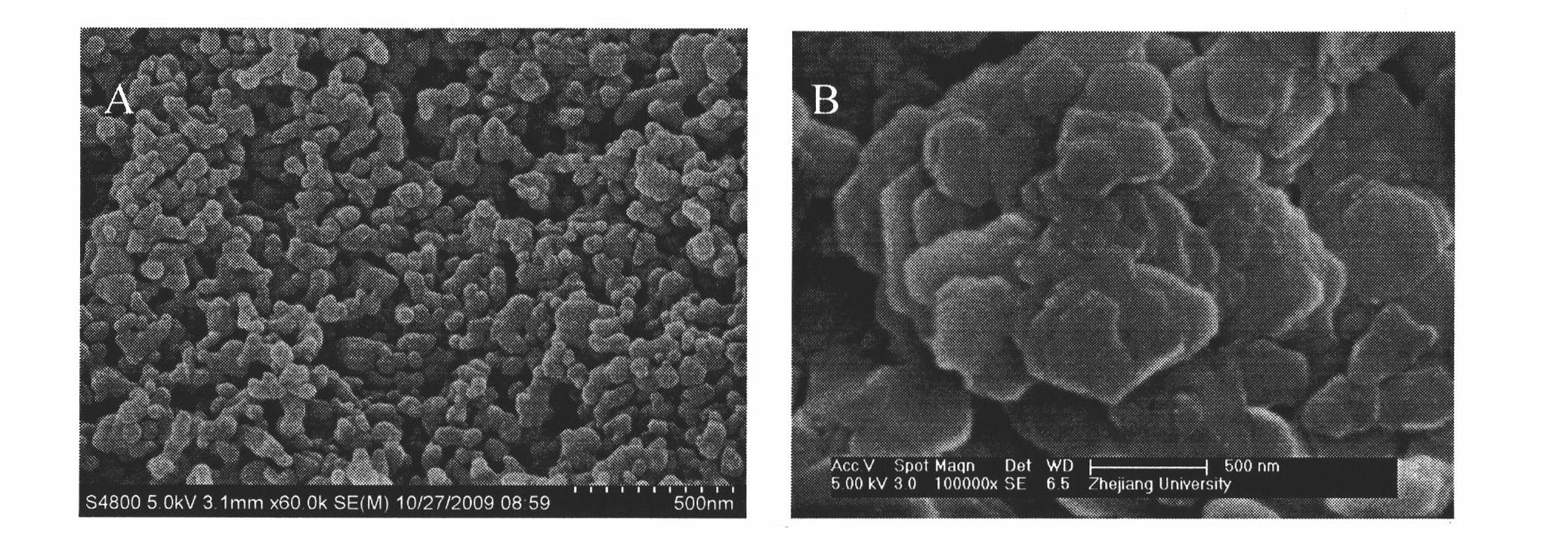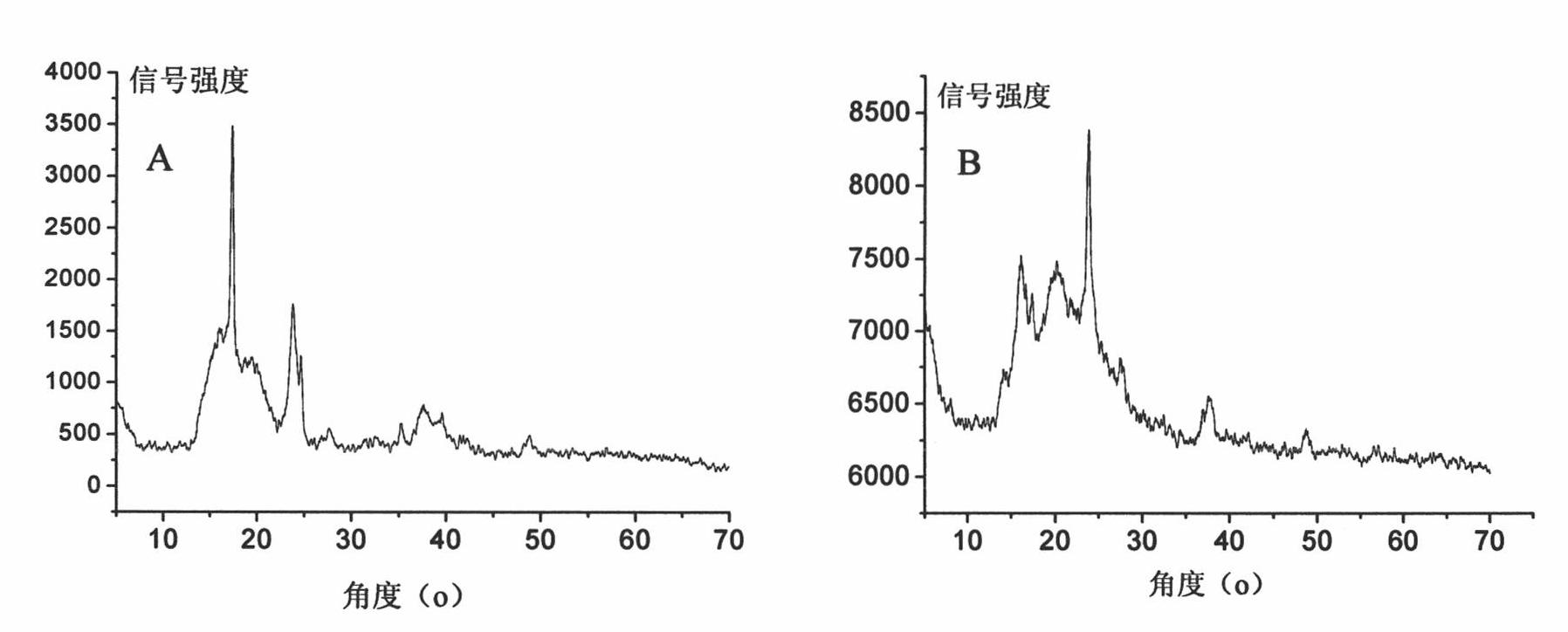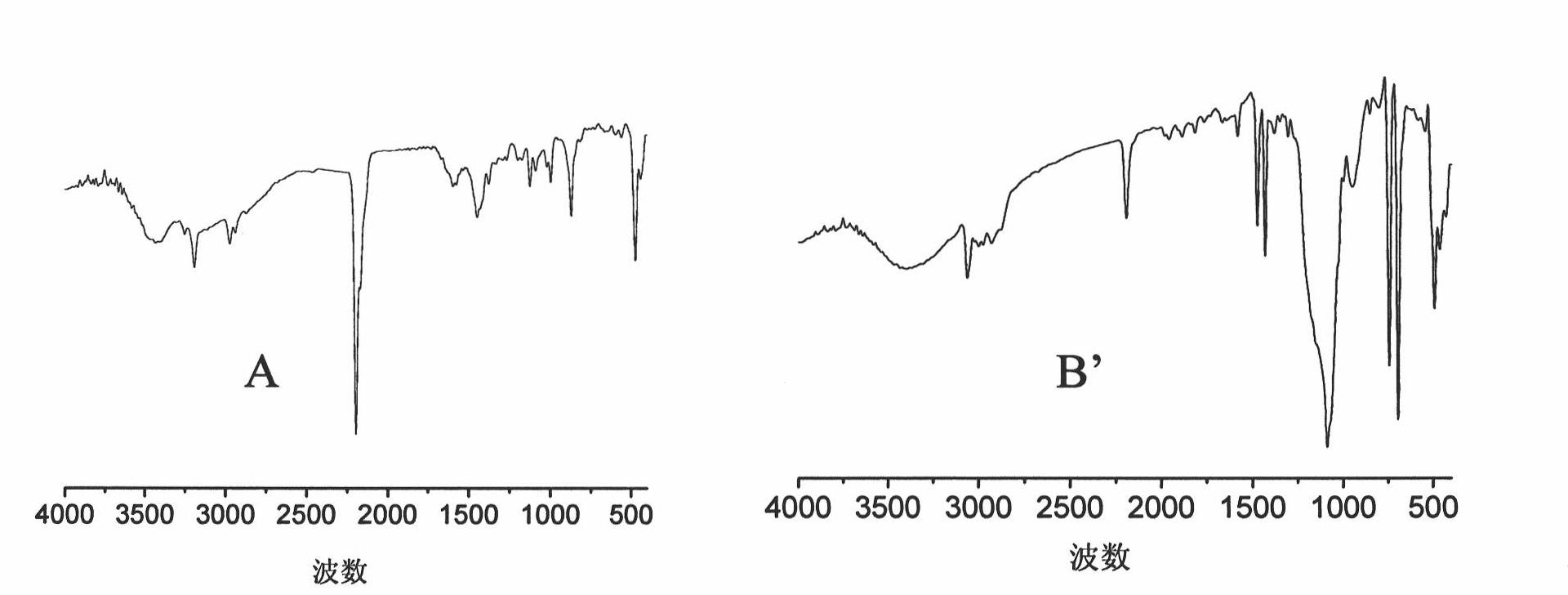Metal cyanide coordination catalyst and preparation method and application thereof
A technology of coordination catalysts and cyanides, which is applied in the field of catalysts for polymer synthesis, and can solve problems such as the inability to increase the degree of copolymer alternation
- Summary
- Abstract
- Description
- Claims
- Application Information
AI Technical Summary
Problems solved by technology
Method used
Image
Examples
Embodiment 1
[0054] The preparation of embodiment 1 metal cyanide complex catalyst
[0055] Step 1: Add 0.80g K 3 Co(CN) 6 (0.0024mol) was dissolved in 50mL of deionized water I, and 2mL (1.57g) of tert-butanol was added to obtain a mixed solution I', and an aqueous hydrochloric acid solution was added to adjust the mixed solution I' to pH<7, and the dissolution was uniform and transparent, and then the mixture was mixed under stirring conditions. 4.0 g (0.029 mol) of zinc chloride was dissolved in 20 mL of deionized water II into an aqueous solution of zinc chloride (mixed solution II'), stirred and reacted at 40 ° C for 24 hours, and suction filtered to obtain a semi-dry solid filter cake;
[0056] Step 2: Disperse the mixture of the filter cake obtained in the previous step and 0.5g zinc chloride (0.0037mol) in anhydrous tert-butanol in which 2.0g 1-phenylimidazole (N-phenylimidazole, 0.0139mol) was dissolved (20 mL), stirred at 60°C for 10 hours, and filtered with suction to obtain ...
Embodiment 2
[0061] The preparation of embodiment 2 metal cyanide complex catalyst
[0062] With embodiment 1, just add 2.1g EO in the mixed solution I ' of step one 20 PO 70 EO 20 (Pluronic P123, Aldrich), is 4.2wt% of deionized water 1 weight (50g). Finally, 1.5 g of a solid metal cyanide complex catalyst was obtained.
[0063] Elemental analysis results: Zn: 19.4wt%; Co: 9.6wt%; Cl: 6.3wt%; C: 28.84wt%; H: 3.27wt%; N: 16.35wt%
[0064] SEM observation (see figure 1 A): spherical shape, the average particle size is less than 100nm;
[0065] XRD result (see figure 2 A) It shows a broad peak in the interval of 2θ=13~25°;
[0066] The average pore size measured by nitrogen adsorption method was 8nm.
[0067] Infrared spectrum (see image 3 A) The peaks at 2294 and 472 wavenumbers are the characteristic infrared absorption peaks of CN and Co-C bonds in the catalyst; the absorption peaks at 1500 and 1200 wavenumbers indicate the presence of organic ligands in the catalyst.
Embodiment 3
[0068] The preparation of embodiment 3 metal cyanide coordination catalyst
[0069] Same as Example 1, except that in step 2, 1-phenylimidazole is replaced by equimolar diphenyl sulfoxide, anhydrous tert-butanol is replaced by anhydrous tetrahydrofuran of equal volume, and the slurry is dispersed in anhydrous tetrahydrofuran. The pulping temperature is the reflux temperature of tetrahydrofuran. 1.8 g of a solid metal cyanide complex catalyst was obtained.
[0070] Elemental analysis results: Zn: 19.2wt%; Co: 9.2wt%; Cl: 2.8wt%; C: 26.04wt%; H: 1.03wt%; N: 15.78wt%.
[0071] SEM observation (see figure 1 B) In flake shape, thickness: 20-40nm;
[0072] XRD results show a broad peak in the interval of 2θ=13~25°;
[0073] The average pore size measured by nitrogen adsorption method was 45nm.
PUM
| Property | Measurement | Unit |
|---|---|---|
| Average pore size | aaaaa | aaaaa |
| Average pore size | aaaaa | aaaaa |
| Average pore size | aaaaa | aaaaa |
Abstract
Description
Claims
Application Information
 Login to View More
Login to View More - R&D
- Intellectual Property
- Life Sciences
- Materials
- Tech Scout
- Unparalleled Data Quality
- Higher Quality Content
- 60% Fewer Hallucinations
Browse by: Latest US Patents, China's latest patents, Technical Efficacy Thesaurus, Application Domain, Technology Topic, Popular Technical Reports.
© 2025 PatSnap. All rights reserved.Legal|Privacy policy|Modern Slavery Act Transparency Statement|Sitemap|About US| Contact US: help@patsnap.com



